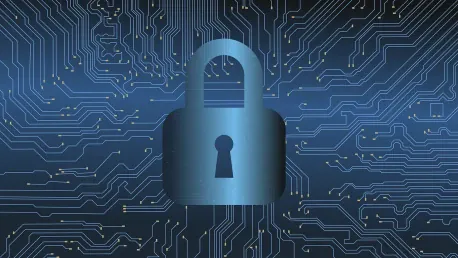The rapid integration of technology in our daily lives has ushered in a new era of cybersecurity challenges. In response, a trio of researchers from Arizona State University’s Global Security Initiative’s Center for Cybersecurity and Trusted Foundations is pioneering innovative approaches to protect against these evolving threats. Their work spans various technological domains, including cyber-physical systems, applied cryptography, and data privacy.
Pioneering Cyber-Physical System Security
Addressing the Internet of Things (IoT) and Vulnerabilities
As our world becomes increasingly interconnected, the Internet of Things (IoT) brings both convenience and vulnerability. Researcher Muslum Ozgur Ozmen focuses on ensuring the security of IoT devices and cyber-physical systems, which include autonomous vehicles, drones, and smart homes. These systems, while enhancing our capabilities, also open up new avenues for cyberattacks that can have real-world consequences.
Ozmen’s research aims to preemptively identify and mitigate these vulnerabilities. His efforts in leading the Secure and Resilient Cyber-Physical Systems Lab involve developing strategies to protect critical infrastructure such as chemical and water plants. By defending these systems, Ozmen helps shield essential services from potential cyber threats that could disrupt daily life. His work is especially critical as the integration of IoT into our lives deepens, making the protection of these devices not just a technical responsibility but a societal one as well.
The Broader Implications of Cyber-Physical Security
The implications of Ozmen’s research extend beyond individual devices to the broader integration of technology in society. Ensuring reliable autonomous vehicles means safer roads, while safeguarding industrial control systems translates to reliable utilities. As our reliance on connected devices grows, so does the importance of preemptive security measures to protect against potential cyber-physical attacks. This proactive approach promises a safer environment where technology enhances our lives without exposing us to increased risks.
Moreover, Ozmen highlights the need for accurate information dissemination about cybersecurity tools. Inaccurate claims about the effectiveness of certain tools, such as VPNs, can mislead users and undermine security efforts. Effective content moderation on social media platforms is essential to combat misinformation and ensure public awareness is based on factual information. This underscores a broader aspect of his work: the need for a well-informed public that understands the importance of cybersecurity tools and how to use them effectively.
Advancing Data Privacy and Applied Cryptography
Protecting Personal and Financial Information
Data privacy remains a paramount concern in the digital age. Researcher Chenkai Weng focuses on applied cryptography and privacy-enhancing techniques to safeguard personal and financial information. His work addresses the significant cybersecurity threat posed by data breaches and unauthorized access to sensitive data. As digital transactions become the norm, the security of these exchanges becomes increasingly critical, necessitating robust cryptographic solutions.
Weng’s collaboration with a major U.S. bank is a testament to the real-world application of his research. By developing advanced cryptographic methods, he aims to protect financial data from exploitation. This collaboration highlights the importance of securing financial transactions, which are susceptible to cyber threats with potentially devastating consequences for individuals and institutions. This partnership not only safeguards financial data but also sets a precedent for how academics can play a vital role in real-world cybersecurity applications.
Bridging the Gap Between Regulation and Privacy Needs
While government regulations on data privacy exist, Weng argues that they are insufficient to achieve a fully private internet. Transparency in how data is used and managed is critical for user awareness and trust. By advancing cryptographic techniques, Weng contributes to a more secure digital ecosystem where individuals can confidently engage in online activities, knowing their data is protected. His research highlights the urgent need for updated and comprehensive regulatory frameworks that can keep pace with technological advancements.
Weng’s work also underscores the need for continuous innovation in cryptography to keep pace with evolving cyber threats. As hackers become more sophisticated, so too must the methods to defend against them. The dynamic nature of cybersecurity demands ongoing research and development to stay ahead of potential vulnerabilities. This need for perpetual innovation reflects the ever-changing landscape of cyber threats, where new techniques and technologies must be continually developed to ensure robust cybersecurity defenses.
Enhancing Public Awareness and Personal Data Security
Understanding Human Perception of Privacy
Public awareness and education play a vital role in cybersecurity. Researcher Rakibul Hasan focuses on the human aspects of privacy, including how individuals perceive and manage their data. His work aims to bridge the gap between technology and user behavior, ensuring that people are better equipped to protect their information. By understanding how people interact with technology, Hasan aims to design privacy measures that are both effective and user-friendly.
Hasan leads the PERSUE (Private, Reliable, and Secure Computing) Lab, where he collaborates with psychologists to study public perceptions of technology and privacy. This interdisciplinary approach sheds light on how user behavior impacts cybersecurity and highlights the importance of informed decision-making in enhancing personal data security. His research not only focuses on technological solutions but also emphasizes the human element, recognizing that user actions significantly influence the effectiveness of cybersecurity measures.
Practical Steps for Improving Personal Privacy
Hasan emphasizes practical strategies individuals can adopt to improve their privacy. Simple changes, such as using websites over mobile apps and opting for private browsers like Brave or Firefox instead of Google Chrome or Safari, can significantly enhance personal data security. By empowering users with knowledge and actionable steps, Hasan’s work contributes to a more secure digital environment. His focus on user-friendly solutions ensures that even those with limited technical expertise can take steps to protect their privacy.
Furthermore, Hasan’s research addresses the growing threat of phishing attacks. Educating the public on recognizing and avoiding phishing attempts is crucial in preventing personal information from falling into the wrong hands. By raising awareness of these cyber threats, Hasan helps individuals take proactive measures to safeguard their data. His emphasis on practical education and awareness-building represents a critical aspect of a comprehensive cybersecurity strategy that includes both technological defenses and informed user behavior.
Fostering Integrated Security and Collaboration
The Importance of Preemptive Security Measures
Common across the research efforts of Ozmen, Weng, and Hasan is the emphasis on preemptive identification and mitigation of vulnerabilities. Rather than reactively addressing cyber threats, these researchers advocate for proactive strategies to secure technological systems before they can be exploited. This proactive stance is essential as the complexity and interconnectivity of modern systems mean that a single vulnerability can have far-reaching consequences.
Integrated security measures are essential in today’s interconnected world. By collaborating across various domains, including industrial entities, financial institutions, and academia, these researchers aim to create comprehensive cybersecurity frameworks that address the diverse aspects of digital security. This collaborative approach ensures that solutions are not only technically sound but also practically applicable, bridging the gap between academic research and real-world implementation.
The trio’s work signifies a shift in the cybersecurity paradigm: from isolated efforts to integrated, collaborative approaches that leverage multidisciplinary expertise. Their initiatives highlight the necessity for continuous dialogue between technologists, policymakers, and end-users to develop effective, lasting cybersecurity solutions in an ever-evolving digital landscape.
Conclusion
The swift integration of technology into our daily lives has brought about a host of new cybersecurity issues. Adapting to this landscape, three researchers from the Global Security Initiative’s Center for Cybersecurity and Trusted Foundations at Arizona State University are at the forefront of crafting innovative solutions to tackle these emerging threats. Their groundbreaking work covers multiple technological areas, such as cyber-physical systems, applied cryptography, and data privacy.
Cyber-physical systems are integral to managing interconnected devices that share information and perform various tasks, which can leave them susceptible to cyber-attacks. The researchers are addressing vulnerabilities in these systems to protect critical infrastructure like power grids and transportation networks. In applied cryptography, they are developing sophisticated encryption techniques to safeguard data as it moves across networks. Ensuring data privacy is another key focus, as they work on methods to secure sensitive information from unauthorized access. Through these multifaceted efforts, the Arizona State University team aims to provide robust protections against the myriad of cybersecurity challenges in our connected world.









